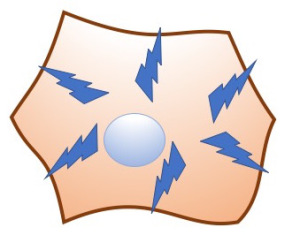The featured image was created from a picture of a 90% epiboly zebrafish embryo, which was stained for phospho Histone H3 (using a red secondary antibody) and by imaging the endogenous membrane GFP in the embryo.
The endogenous fluorescent protein survives the standard fixation procedure. However, it is also possible to detect it with a specific antibodies.
Below is a brief description of how I perform an antibody staining on whole mount zebrafish embryos.
Fixation:
For most standard antibodies (e.g. pH3, PCNA, antiGFP), it is OK to fix the animals (pre-gastrulation until 48hpf) in 4% PFA at 4˚C. In contrast to in situ hybridization, I would not recommend to keep the animals for longer in PFA or treat the animals with methanol.
4%PFA: 4% w/v Paraformaldehyde in 1xPBS
- Fix embryos in 4% PFA over night at 4˚C
Washes:
PBST: 1 x PBS with 0.1% Tween (PBST).
For all the PBST washing steps, as well as the blocking steps and antibody incubation, it is advantageous to put the tubes on a shaker, to ensure an even staining of the embryos.
- 3 x 5min wash in 1xPBST
If the embryos have not been dechorionated prior to fixation, this would be the time to dechorionate them.
Permeabilization:
- replace the PBST with dH2O and incubate for a few minutes
- replace the dH2O with Acetone (stored at -20˚C prior to using) and incubate the embryos for 7 minutes at -20˚C
- replace the Acetone with dH2O and incubate 1 min at room temperature
The way the permeabilization works is, that the water in the tissue forms ice crystals when the tissue is transferred into the cold Acetone. The ice crystals pierce the cell membrane, hence permit the antibodies to enter.

Washes:
- wash embryos 3 x 5 minutes in PBST
Blocking:
Blocking buffer: 2% Normal Goat Serum, 1% DMSO, in 1xPBST
- rinse the embryos once in the blocking buffer
- incubate the embryos for at least 30 minutes up to several hours in the blocking buffer
Primary Antibody Incubation:
- dilute primary antibody for your protein of interest in Blocking buffer
- incubate the embryos with the primary antibody dilution over night at 4˚C. In a pinch you can also incubate the embryos for 2 hours at room temperature, but it is better to do it over night at decreased temperature.
Washes:
- the primary antibody dilution can be kept and reused several times. (Store the dilution at 4˚C and watch out for anything growing in the solution, which is when you should through it out.)
- wash embryos 3 x 5 minutes in PBST
Secondary Antibody Incubation:
- dilute secondary antibody (specific for the animal, the primary antibody was raised in) in Blocking buffer (prepare the blocking buffer fresh every day)
- incubate the embryos for 2 hours at room temperature (in the dark, if the antibody is conjugated with a fluorophore).
Washes:
- wash embryos 3 x 5 minutes in PBST
Nuclear Counterstains: These can be added to the secondary antibody dilutions if you are performing a fluorescent staining. The concentration differs from batch to batch.
- DAPI
- Hoechst
- DRAQ5
- Propidium Iodide
<*)))<<
Advertisements Share this:




